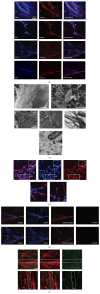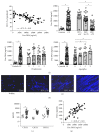Free DNA in cystic fibrosis airway fluids correlates with airflow obstruction
- PMID: 25918476
- PMCID: PMC4397025
- DOI: 10.1155/2015/408935
Free DNA in cystic fibrosis airway fluids correlates with airflow obstruction
Abstract
Chronic obstructive lung disease determines morbidity and mortality of patients with cystic fibrosis (CF). CF airways are characterized by a nonresolving neutrophilic inflammation. After pathogen contact or prolonged activation, neutrophils release DNA fibres decorated with antimicrobial proteins, forming neutrophil extracellular traps (NETs). NETs have been described to act in a beneficial way for innate host defense by bactericidal, fungicidal, and virucidal actions. On the other hand, excessive NET formation has been linked to the pathogenesis of autoinflammatory and autoimmune disease conditions. We quantified free DNA structures characteristic of NETs in airway fluids of CF patients and a mouse model with CF-like lung disease. Free DNA levels correlated with airflow obstruction, fungal colonization, and CXC chemokine levels in CF patients and CF-like mice. When viewed in combination, our results demonstrate that neutrophilic inflammation in CF airways is associated with abundant free DNA characteristic for NETosis, and suggest that free DNA may be implicated in lung function decline in patients with CF.
Figures



References
MeSH terms
Substances
LinkOut - more resources
Full Text Sources
Other Literature Sources
Medical

